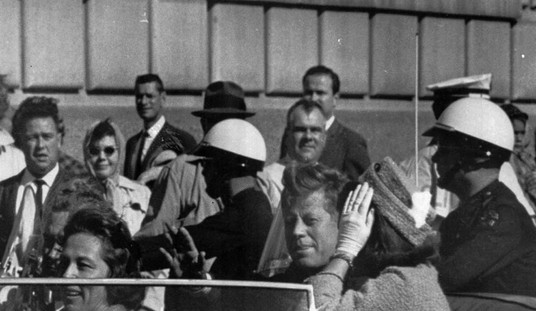Iowa is a messy place for politicos and those covering them. Where most other states have primaries, with definitive go-into-the-booth-and-vote moments, Iowans attend caucuses where they mill about school gymnasiums and VFW halls at nearly 1,800 different locations across the state. Then they stand in a corner. And then they do some math and discuss amongst themselves why they stand in a given corner followed by, perhaps, moving to a different corner. It does not make for good television, snappy sound bytes or tidy conclusions.
And because of the deliberative nature of the Iowa caucuses, politicians and their staffs find themselves obliged to lavish individual time and attention upon the state’s voters, no more than 150,000 of whom can be counted on to brave the cold and snow of a January night to actually participate in the caucuses. It is no exaggeration to say that by the time Iowans stand in their corners this Thursday, a candidate will probably have shaken the hand of every voter whose support they win. No shock and awe air war here. The campaign in Iowa is waged county by county, precinct by precinct, house to house. Iowa remains the Stalingrad of elective politics.
And that’s the part that makes for good copy, so much so that if such things were based on column inches and air time alone, the presidential campaign waged in Iowa in 2007 would surely be judged Story of the Year.
Nevertheless, the campaign in Iowa, despite its unprecedented duration and the extended media coverage it has been given, has been a story with remarkably little arc. Since late January, the field of candidates has been the same, save for the little-noticed departure of Iowa’s former governor Tom Vilsack. And, to a surprising degree, the issues and arguments have also remained the same.
The campaign in Iowa began with the candidates staking out their chosen themes: Hillary Clinton was in it to win it, casting herself as the inevitable nominee; Barack Obama, seeking to extend the theme of his keynote address to the 2004 Democratic National Convention, was the candidate of hope with a capital ‘h’, vowing to unite the country and bring change a broken political system; John Edwards likewise cast himself as the candidate who would change the system, but by standing up to the entrenched bullies of the establishment and beating them on behalf of the little guy.
As an aside, the dynamic of the Republican contest has been more fluid as the campaign fortunes of John McCain, Rudy Giuliani, Mitt Romney and Mike Huckabee have ebbed and flowed through the year, while the much-ballyhooed late entry of Fred Thompson into the race has turned out to be a non-event. I gather from this mainly that GOP voters remain highly ambivalent about their choices this cycle, largely unmoved by the current field, and longing, as ever, for the second coming of Ronald Reagan.
Returning to the Democratic field, then, flash forward eleven months, and little about the candidates’ initial story line has changed. The campaigns have been disciplined in sticking to their messages, and the media has obligingly taken it up as the focus of its coverage for most of the year, taking validation from national polling numbers that have nothing to do with the race in Iowa (more on that in a moment).
So what, then, of issues: things like health care, restoring constitutional checks and balances, or protecting the country against terrorism? What of events on the ground in Iraq, the Levant, or the Korean Peninsula? What impact have they had on the course of the Iowa campaign? Surprisingly little, as it turns out. In this campaign, issues have served as little more than the handmaid to the pre-existing narratives launched by the campaigns at their outset.
If there is one thing to keep in mind about the polls with respect to the actual state of things on the ground in Iowa, it is this: ignore them. Disregard them utterly. No poll has ever been put into the field that can accurately depict the web of first choices, second choices, viability, turnout, and delegate disparity from precinct to precinct that enshrouds the Iowa caucuses. Every Iowa voter knows this, as do the campaigns. Who is surging, or slumping in Iowa? The answer will depend on which poll you cite, and you can find a poll to substantiate virtually any scenario you choose: a Hillary landslide, a stunning upset from a late surging John Edwards, even a shocker where Joe Biden finishes third or a close fourth and rides into New Hampshire with the wind beneath his wings. You can find polls to back up any of these prospective outcomes.
The point is that while one poll may turn out to be accurate in predicting the outcome in Iowa, they surely cannot all be. And, in fact, the likelihood is that that none of them are.
The most anyone can confidently say about the race in Iowa is that it remains close and inscrutable. There are two days left until caucus night, and that is an eternity in politics. The only prediction likely to hold up is that surprises await.
Dave Musgrove is a Democratic voter and blogger in Des Moines, Iowa. After meeting every major Democratic candidate in the past year, Dave has pledged to caucus for Joe Biden this cycle, and volunteered as a Biden precinct captain. Dave’s own political blog, iPol, can be found at ipol-2008.blogspot.com.









Join the conversation as a VIP Member